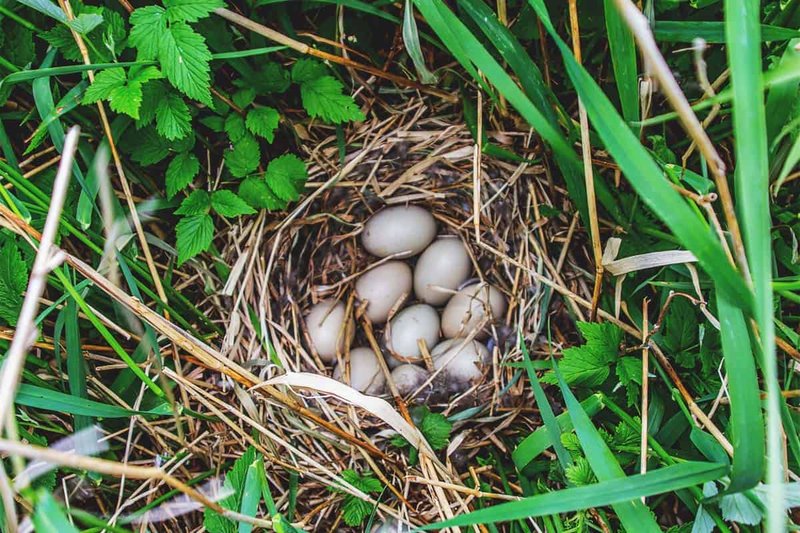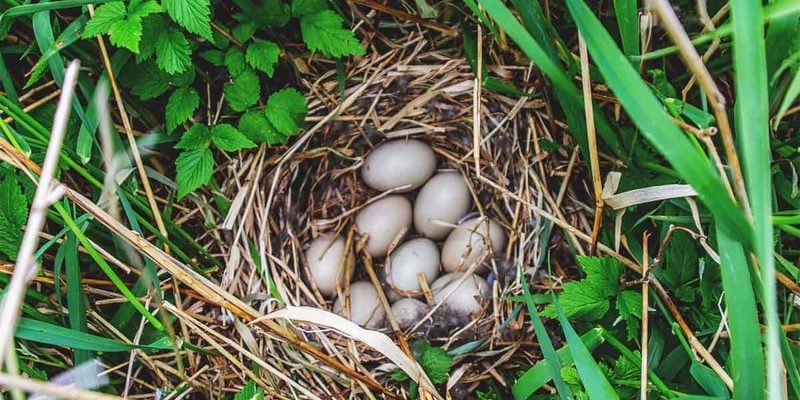
Muscovy ducks, unlike their more familiar cousins, are known for their striking appearance and are quite different in behavior. They’re larger, often have a more colorful plumage, and are less vocal. These ducks can be quite the characters! Understanding their nesting habits and lifecycle can help anyone who wants to appreciate these remarkable birds or even consider keeping them around. So, let’s dive into their world!
Understanding Muscovy Duck Nesting Habits
Muscovy ducks are quite particular when it comes to nesting. They prefer secluded areas where they feel safe from predators. This could mean a cozy spot in dense vegetation, underbrush, or even inside abandoned buildings. You might picture them finding a little nook in a thicket, just out of the sight of potential threats.
When the female is ready to lay eggs, she’ll search for a suitable site that can provide shelter and warmth. It’s a bit like Goldilocks looking for the perfect bed—she wants one that’s just right! They often choose spots that are near water sources, making it easy for ducklings to find their way to water once they hatch.
Another interesting thing about Muscovy ducks is that they can be quite communal. Sometimes, you might find them sharing nesting sites with other ducks. Imagine a few families coming together for a neighborhood potluck; that’s how they can get along! This communal behavior is believed to enhance the safety of the nests, as more ducks mean more eyes to spot danger.
The Nesting Process
Once a female Muscovy duck has found her ideal nesting site, she’ll get to work. Typically, she lays between 8 to 16 eggs, and these eggs are often pale blue or greenish. It’s a beautiful sight! The female will lay eggs over a period of time, often taking a few days to complete her clutch.
After laying her eggs, she’ll start incubating them. Incubation usually lasts about 35 days—a little longer than many other duck breeds. During this time, she’ll carefully rotate the eggs to keep them warm and evenly heated. It’s her full-time job! She’ll only leave to feed or drink briefly, so you can imagine how dedicated she is to protecting her little ones.
While she’s busy incubating, the male Muscovy duck will typically stay nearby, keeping watch. He’ll be the protector, standing guard. It’s a team effort! Here’s the thing: that level of care and attention helps ensure the eggs develop properly, increasing the chances of successful hatching.
The Hatching Process
When the incubation period comes to an end, it’s the moment everyone has been waiting for. The baby ducklings start to chip away at their shells using a small, hard bump on their beaks called an “egg tooth.” It’s like they have their own built-in tool for this important job!
Once they break free, these ducklings are surprisingly precocial. This means they’re relatively alert and capable right away. Before you know it, they’re up and moving, following their mom in a little line, eager to explore their new world. Isn’t that adorable?
Muscovy ducklings are often fully feathered by the time they’re just a few weeks old, and they’re fast learners. The mother duck leads them to water, where they quickly learn to swim and feed. This transitional stage is crucial, as the ducklings need to gain strength and skills to thrive in their environment.
Parental Care
Once the ducklings hatch, the care doesn’t stop there. Muscovy ducks are highly attentive parents. The female will lead her babies to water shortly after they hatch, and you’ll often see her guiding them as they learn to forage for food. Imagine a teacher showing her students the ropes—that’s exactly what she’s doing.
Here’s the thing: Muscovy ducks are also known for their protective instincts. They’ll fend off potential threats, using their wings and even hissing to scare away predators. This fierce guardianship helps ensure the survival of their young, especially during those risky early days.
Interestingly, Muscovy ducks can also take care of ducklings that aren’t their own. If a female loses her own brood, she might adopt others, creating a unique “duck family.” It’s a heartwarming aspect of their behavior that shows just how nurturing they can be.
Diet and Feeding During the Lifecycle
As ducklings grow, their dietary needs change significantly. In the beginning, they primarily consume their mother’s milk and any small insects they can find. But as they mature, they transition to a more diverse diet. Adult Muscovy ducks eat various foods, including grains, vegetables, and aquatic plants.
Here’s where it gets interesting! Muscovy ducks are known to be excellent foragers. They’ll often dive into the mud or water to find delicious morsels, like insects and larvae. Think about a chef searching for the freshest ingredients; they know exactly where to look to whip up a tasty meal!
In terms of nutrition, ducklings need a balanced diet to support their growth. As they mature into adults, it’s essential they continue to have access to a varied and healthy diet. This helps maintain their health and energy levels, particularly as they explore their environment and learn to fend for themselves.
Challenges in the Muscovy Lifecycle
Despite their tough exterior, Muscovy ducks face challenges throughout their lifecycle. One major concern is predation. Eggs and young ducklings can be tasty snacks for various predators, including raccoons, foxes, and birds of prey.
To combat this, the mother duck employs several strategies. She’ll often choose nesting sites that offer good cover and will remain vigilant during the incubation period. But sometimes, even the best-laid plans can go awry. That’s part of nature’s cycle, unfortunately.
Another challenge is finding food, especially in harsh conditions. During dry spells, food sources can dwindle. Muscovy ducks have to adapt by changing their foraging habits, which can be tough for the young ones. It’s a lesson in resilience, and it reminds us how important it is to adapt to life’s ups and downs.
The Lifespan of Muscovy Ducks
Muscovy ducks have a good lifespan, often living up to 15 years or more with proper care. In the wild, they may face more hazards, but when raised in a safe environment, their longevity increases significantly.
A long life allows these ducks to go through several breeding cycles, contributing to their populations. Isn’t it fascinating to think about how many little ducklings one female can raise over her lifetime? Each year adds another chapter to her story.
Whether in the wild or as domesticated birds, understanding the lifecycle and nesting habits of Muscovy ducks can deepen our appreciation for these remarkable creatures. So, next time you see a Muscovy duck, remember the incredible journey they go through—from laying eggs to nurturing their young.
In conclusion, Muscovy ducks offer us a glimpse into the beauty of nature. Their nesting habits and lifecycle are filled with challenges, achievements, and unwavering parental care. And if you ever get the chance to observe them in action, consider yourself lucky! These charming ducks are more than just a pretty sight; they lead rich, complex lives that are worth understanding and appreciating.

